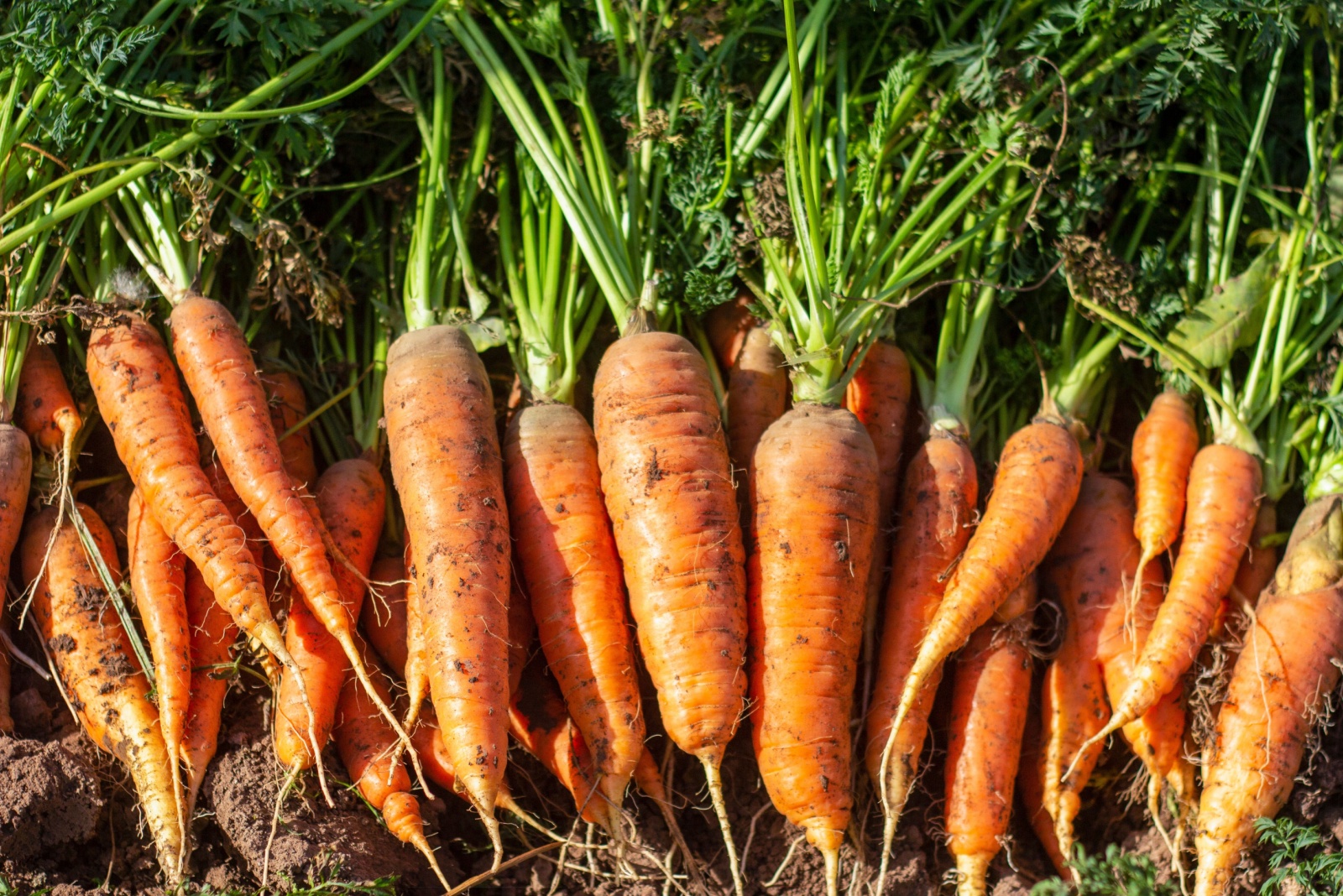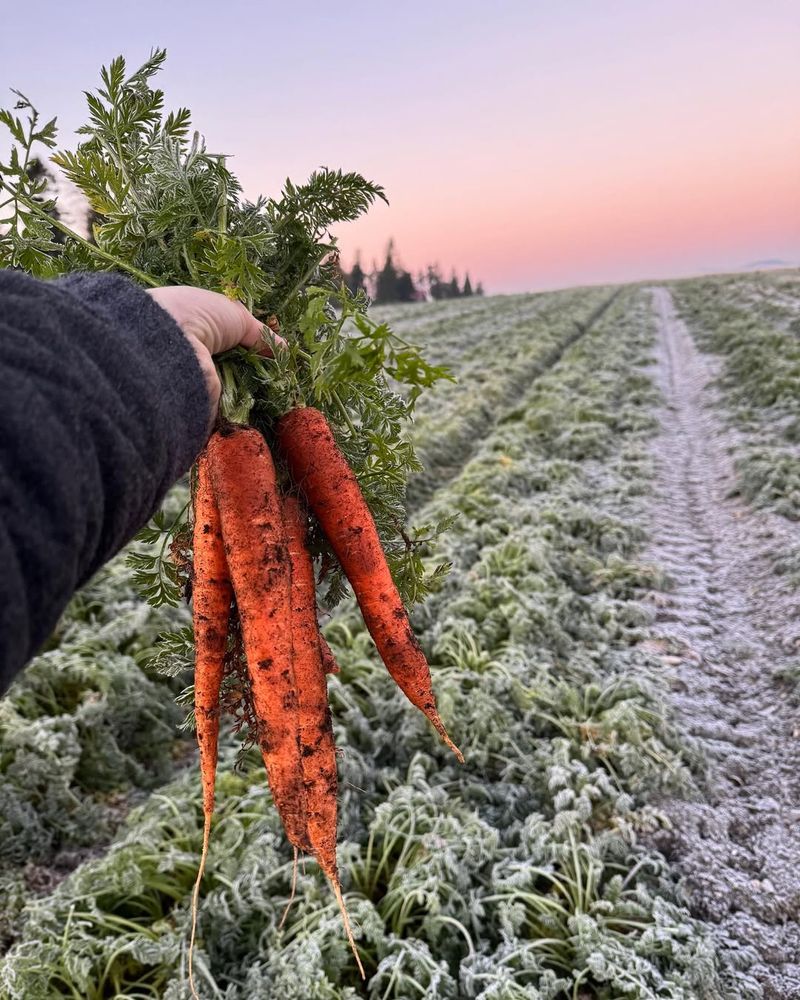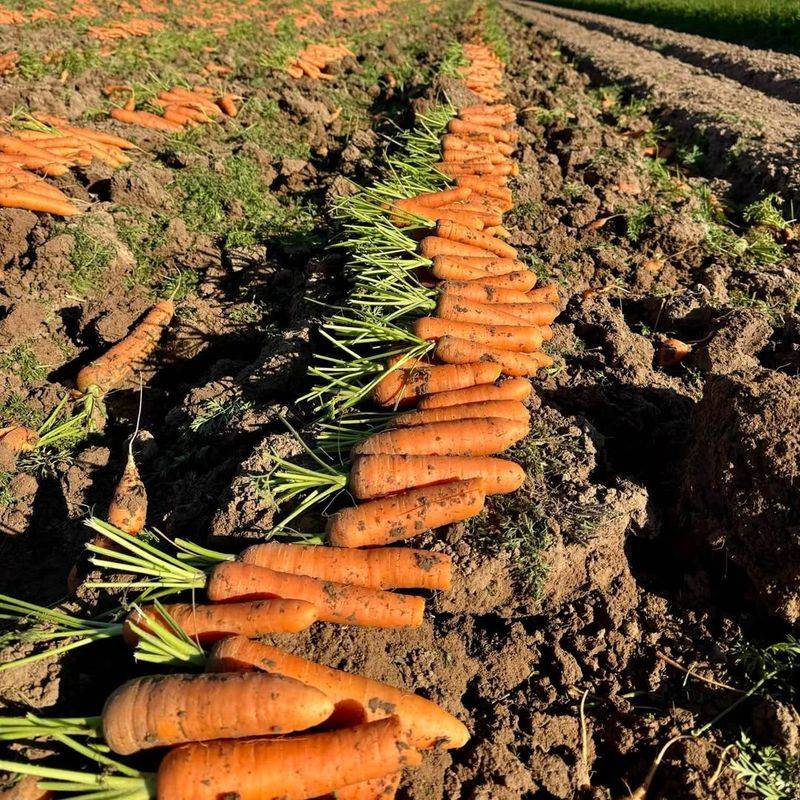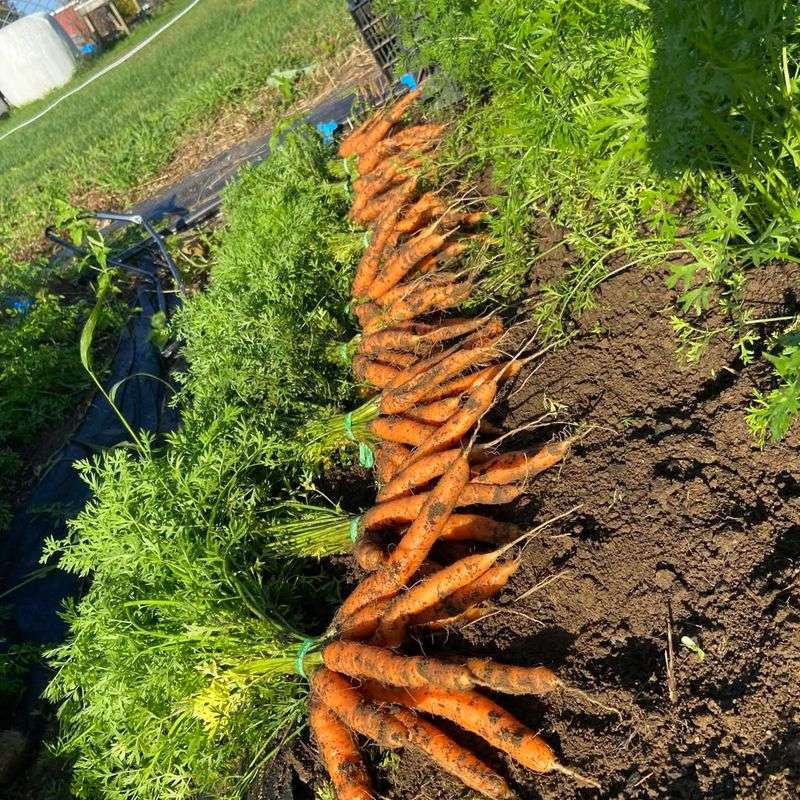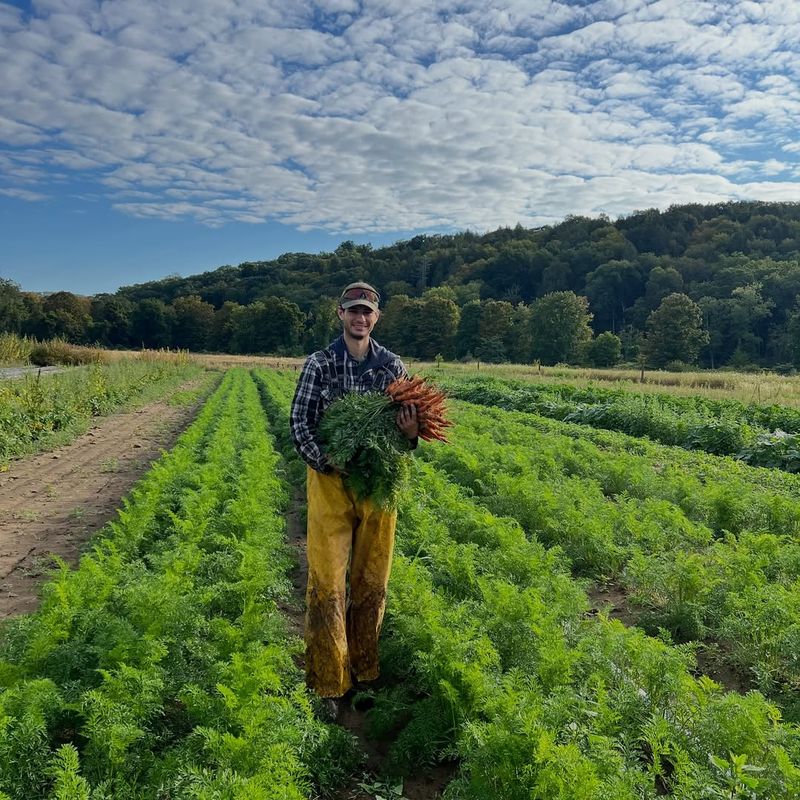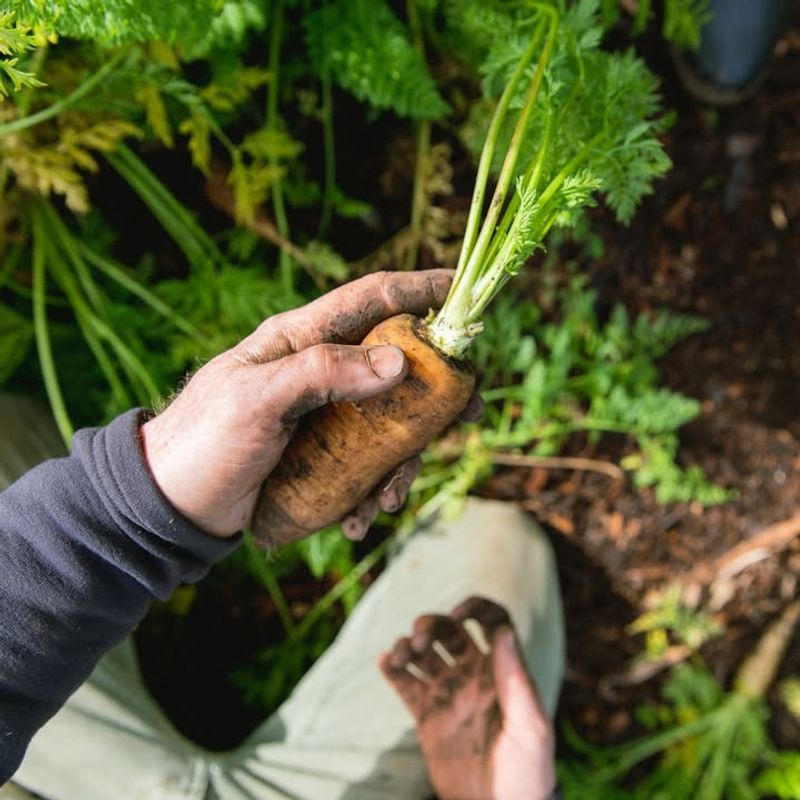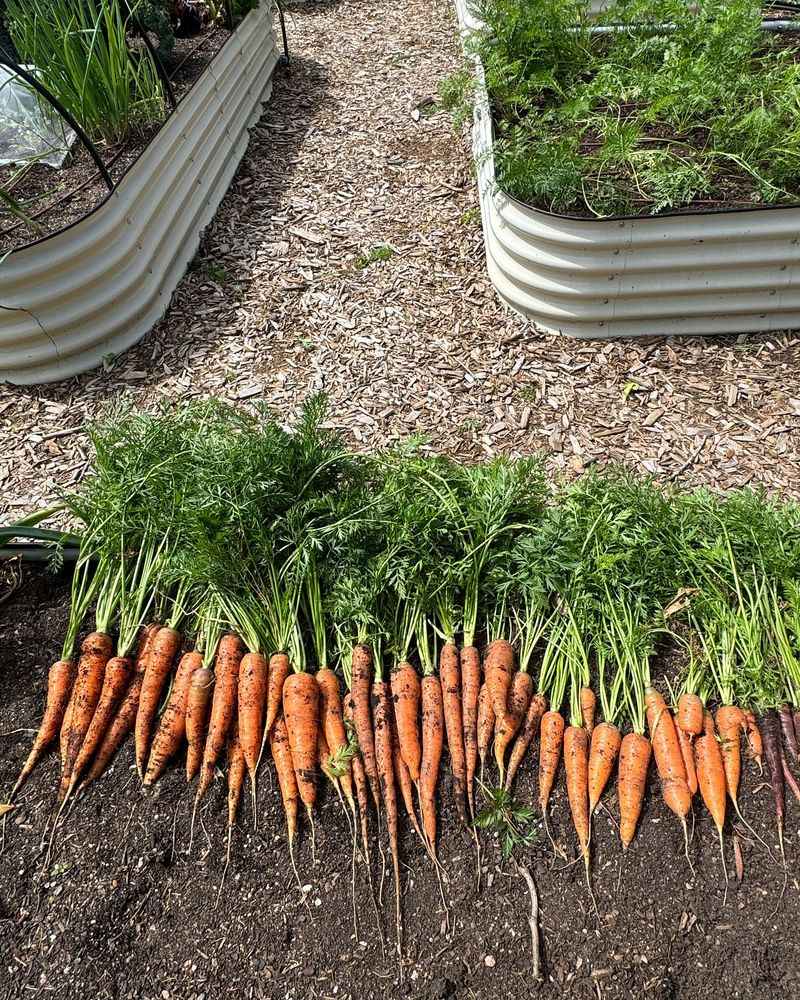Winter gardening in Washington State holds a delicious secret that many home growers cherish. When December arrives with its chilly temperatures and shorter days, something magical happens beneath the soil where carrots are growing.
Those bright orange roots transform into surprisingly sweet treats that taste better than summer carrots ever could. Understanding why this sweetness develops can help you grow the most flavorful carrots possible.
Cold Temperature Sugar Conversion
Carrots respond to cold weather by converting their stored starches into natural sugars. This process acts like a built-in antifreeze system that protects the root from freezing damage.
When temperatures drop below 40 degrees Fahrenheit, enzymes inside the carrot become more active. These special proteins break down complex carbohydrates into simple sugars that lower the freezing point of water inside the cells.
Washington’s December weather provides perfect conditions for this transformation, making your carrots noticeably sweeter with each cold night.
Slower Growth Equals Concentrated Flavor
December’s short days and cool temperatures dramatically slow carrot growth rates. Instead of rapidly expanding like summer vegetables, winter carrots develop at a leisurely pace that concentrates their natural flavors.
Think of it like reducing a sauce on the stove. Slower development means sugars and nutrients pack into a smaller space rather than getting diluted by quick water uptake.
Washington’s mild but cool December climate creates ideal conditions for this flavor concentration without completely stopping growth.
Natural Frost Protection Mechanism
Mother Nature equipped carrots with an incredible survival strategy. Sugar molecules act as natural antifreeze, preventing ice crystals from forming inside plant cells and causing terrible damage.
Without this protective sweetness, frozen water would expand and burst the carrot’s cell walls. The higher sugar concentration keeps the plant tissues flexible even when temperatures plunge overnight.
Washington gardeners benefit from consistent frost exposure that triggers maximum sugar production while rarely getting cold enough to actually harm the protected roots.
Extended Growing Season Benefits
Washington State enjoys a remarkably gentle winter climate compared to most of the country. Carrots planted in late summer or early fall continue developing slowly through December rather than withering.
This extended timeline gives roots extra months to accumulate sugars and develop complex flavors. The longer a carrot stays in the ground during cool weather, the sweeter it becomes.
Gardeners in harsher climates miss out on this advantage since their soil freezes solid, but Washington’s moderate conditions support ongoing sweetness development throughout winter.
Reduced Pest Pressure Improves Quality
Carrot rust flies, aphids, and other troublesome insects disappear when cold weather arrives. December carrots grow without the stress of constant pest attacks that plague summer crops.
Unstressed plants produce better-tasting vegetables because they channel energy into flavor development instead of defensive chemicals. Fewer pest holes also mean less rot and disease entering the roots.
Washington’s December gardens become peaceful havens where carrots can focus entirely on sweetness rather than survival, resulting in premium-quality roots with unblemished skin.
Optimal Soil Moisture Retention
December brings consistent rainfall to Washington State, keeping garden soil evenly moist without the drying heat of summer. Carrots thrive in these stable moisture conditions that prevent stress and cracking.
Steady water availability allows roots to absorb nutrients efficiently while maintaining the perfect texture. Too much water causes rot, while too little makes carrots woody and bitter.
Washington’s natural winter precipitation pattern provides just the right balance, helping carrots develop their sweetest possible flavor without requiring constant watering from gardeners.
Lower Respiration Rates Preserve Sugars
Plants breathe just like animals, using a process called respiration that burns sugars for energy. Cold December temperatures dramatically slow down this metabolic activity in carrot roots.
When respiration slows, carrots stop burning through their sugar reserves quickly. The sweetness they produce gets stored rather than consumed, accumulating to higher and higher levels.
Washington’s cool but not freezing December weather hits the sweet spot where carrots maintain enough activity to produce sugars while being cold enough to preserve them beautifully.
Ideal Day-Night Temperature Swings
Washington’s December weather typically features mild days around 45 degrees and chilly nights near 35 degrees. These daily temperature fluctuations trigger repeated cycles of sugar production in carrot roots.
Each cold night prompts carrots to convert more starches into protective sugars. Warmer days allow photosynthesis to continue in the green tops, producing new starches to convert the following night.
This rhythmic pattern creates a sugar-building cycle that wouldn’t happen with constant temperatures, making Washington’s variable December climate perfect for maximum sweetness development.
Reduced Competition From Other Plants
Most garden plants wither or go dormant when winter arrives, leaving carrots as the stars of December beds. Without competition from vigorous summer crops, carrots access all available soil nutrients and water.
This exclusive access to resources means better root development and enhanced flavor. Nitrogen, phosphorus, and potassium flow directly to carrot roots rather than being shared with demanding tomatoes or squash.
Washington gardeners who plan succession plantings enjoy December harvests from carrots that claimed the entire garden bed for themselves during their final growth phase.
Protection From Heat Stress
Summer heat above 75 degrees causes carrots to become bitter and develop harsh flavors as a stress response. December’s cool weather eliminates this problem entirely, allowing only sweet flavors to develop.
Hot soil also speeds up carrot maturity too quickly, preventing proper flavor development. Winter’s gentle temperatures give roots time to mature slowly and properly.
Washington gardeners avoid the bitterness issues that plague carrot growers in warmer regions, enjoying consistently sweet harvests thanks to December’s naturally cool, stress-free growing environment that carrots absolutely love.
Perfect Harvest Timing Window
December represents the ideal moment when carrots have experienced enough cold exposure to maximize sweetness without suffering freeze damage. Timing your harvest during this window captures carrots at peak flavor.
Waiting until December allows multiple frost cycles to work their sugar-converting magic. Harvesting too early means missing out on the full sweetness potential that develops over time.
Washington’s reliable December weather patterns give gardeners a generous harvest window where carrots maintain perfect sweetness, unlike regions where sudden hard freezes force rushed harvesting before flavors fully develop.

